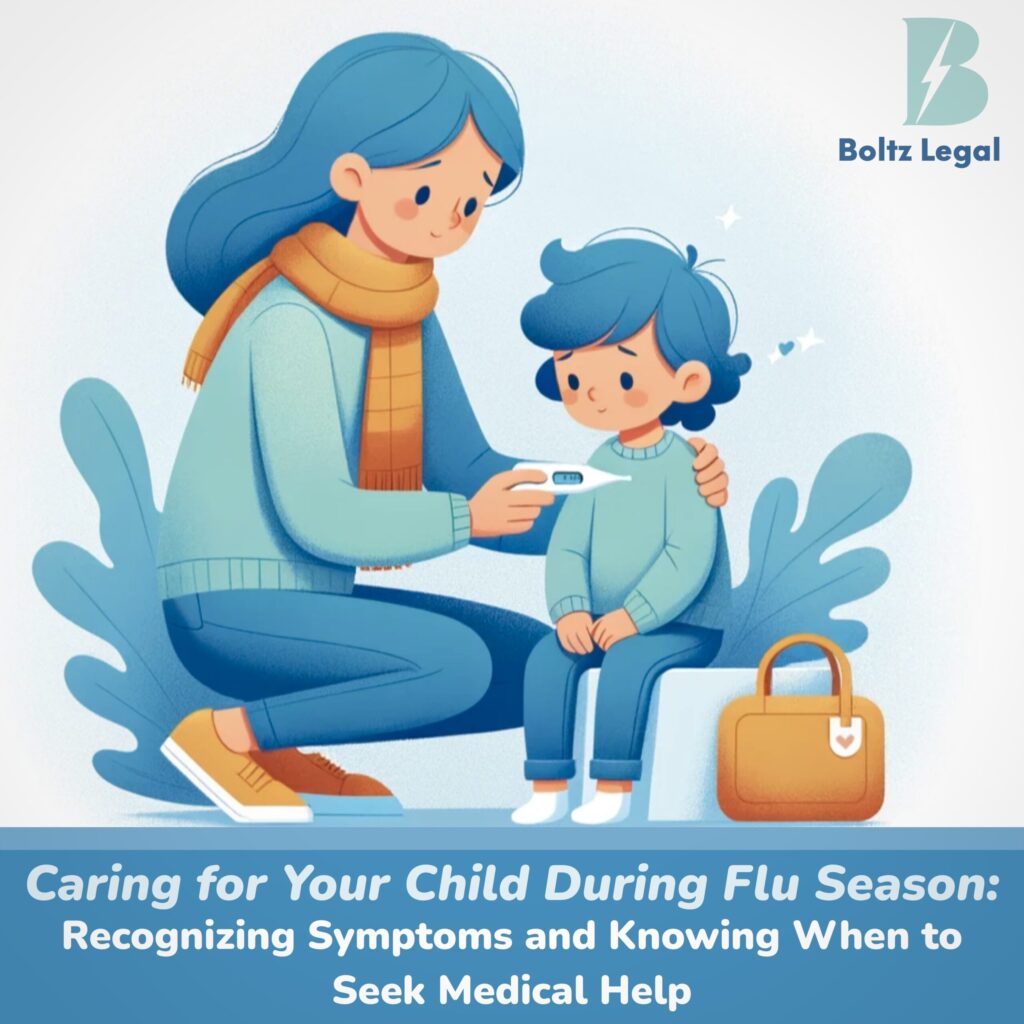During this challenging flu season, which ranks as one of the most severe in a decade, it is crucial for parents to recognize the symptoms of the flu in children and understand when it is necessary to seek medical attention. Hospitals nationwide have reported a significant increase in flu-related emergencies. This article aims to provide comprehensive information about flu symptoms in children when to worry, and appropriate steps to take, including when to contact a doctor or visit an emergency center.
Recognizing the Flu in Children
Flu, a highly contagious viral infection, affects the air passages of the lungs and can cause a range of symptoms. For most children, the flu is a short-lived illness, but it can lead to serious complications such as pneumonia or, in extreme cases, death. Key flu symptoms in children include:
- High fever (up to 105°F or 40.5°C)
- Severe body aches
- Headache
- Sore throat
- Worsening cough
- Extreme tiredness
- Runny or stuffy nose
- Nausea, vomiting, and diarrhea (in some cases)
When to Seek Medical Attention
Parents should monitor flu symptoms in children closely. Home care, including fever-reducing medications like Tylenol or Ibuprofen, rest, and plenty of fluids, is usually sufficient. However, in certain situations, immediate medical attention is necessary. Warning signs that warrant a visit to the emergency center include:
- Return of flu-like symptoms with worsened fever or cough
- Fast or troubled breathing
- Cyanosis (bluish skin discoloration)
- Signs of dehydration
- Severe lethargy and irritability

Alternative Prevention Strategies for Flu
While vaccinations are a common recommendation for flu prevention, there are several other effective strategies that can help protect your child from the flu, especially considering the presence of other respiratory illnesses like COVID-19 and RSV.
Enhanced Hygiene Practices
Good hygiene is crucial in preventing the spread of the flu virus. Encourage your child to wash their hands frequently with soap and water, especially before eating and after coughing or sneezing. Hand sanitizers can be a practical alternative when soap and water are not readily available.
Healthy Lifestyle Choices
A strong immune system can help ward off flu viruses. Ensure your child gets enough sleep, eats a balanced diet rich in fruits and vegetables, and stays physically active. These lifestyle choices support overall health and boost the body’s natural defense mechanisms.
Limiting Exposure
During flu season, try to limit your child’s exposure to crowded places where the flu virus can easily spread. Encourage your child to avoid close contact with people who are sick. If someone in the household is ill, try to minimize the child’s interaction with them.
Clean and Sanitized Environment
Regular cleaning and sanitizing of frequently touched surfaces in your home, such as doorknobs, light switches, and toys, can reduce the risk of flu virus transmission. It’s also beneficial to keep the living environment well-ventilated.
Covering Coughs and Sneezes
Teach your child to cover their mouth and nose with a tissue or their elbow when coughing or sneezing, and to dispose of used tissues properly. This practice helps prevent the spread of germs.
By adopting these preventive measures, you can help safeguard your child’s health during flu season without relying on vaccinations.
Today’s Insight:
“Success is not final, failure is not fatal: It is the courage to continue that counts.”
– Winston Churchill

